A backyard garden is more than just a patch of green; it’s a canvas for creativity, a sanctuary of tranquility, and a source of endless joy. Whether you’re just starting with a few pots or you’ve been nurturing your landscape for years, enhancing the beauty of your garden can transform the way you experience your outdoor space.
For those new to gardening, fear not—the journey of creating a stunning garden is both rewarding and accessible. Seasoned gardeners, too, will find that even small tweaks and thoughtful additions can breathe fresh life into their cherished havens. In this article, we’ll explore a range of ideas tailored to elevate any garden, from strategic plant placement to incorporating charming garden features.
You’ll learn how to choose the right plants that not only thrive but also contribute to the aesthetic harmony of your garden. We’ll delve into the art of color coordination, texture mixing, and the clever use of garden accessories to create a visually captivating space. Together, let’s embark on a journey to transform your backyard into a beautiful retreat that reflects both your style and the natural beauty of the world around you.
Select Vibrant Flower Varieties
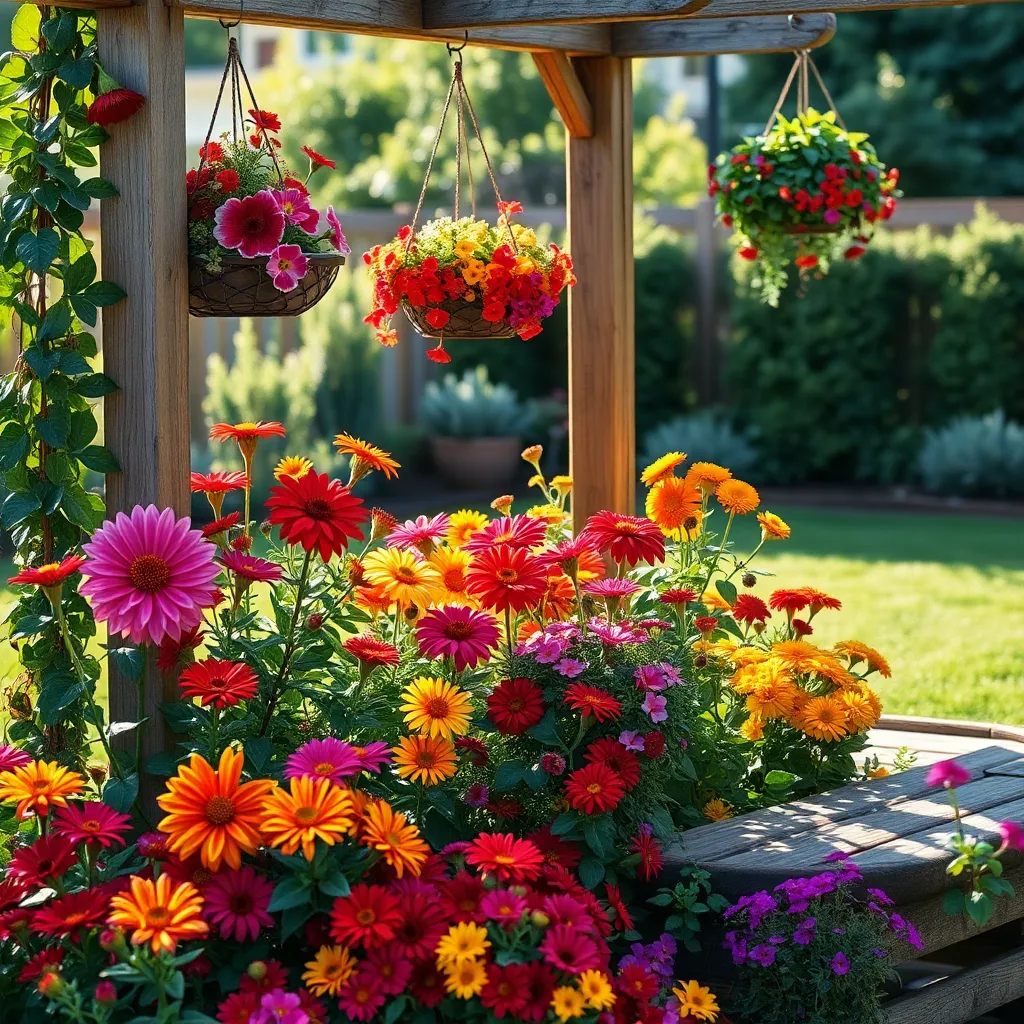
To add vibrancy to your backyard garden, consider planting a mix of flower varieties that bloom at different times of the year. This ensures a continuous splash of color and attracts beneficial pollinators like bees and butterflies.
Begin with easy-to-grow options such as marigolds and zinnias, which thrive in well-drained soil and full sun. These flowers are not only colorful but also resilient, making them perfect for beginners looking to boost their gardening confidence.
For those willing to experiment, try incorporating perennials like coneflowers and daylilies that naturally return each year. These plants prefer a sunny spot and require minimal maintenance once established, offering long-term color with less effort.
To enhance the vibrancy, consider a few advanced techniques like succession planting, where you stagger planting times to achieve overlapping blooms. This method requires some planning but rewards you with a garden that stays lively and engaging throughout the seasons.
Design a Harmonious Layout
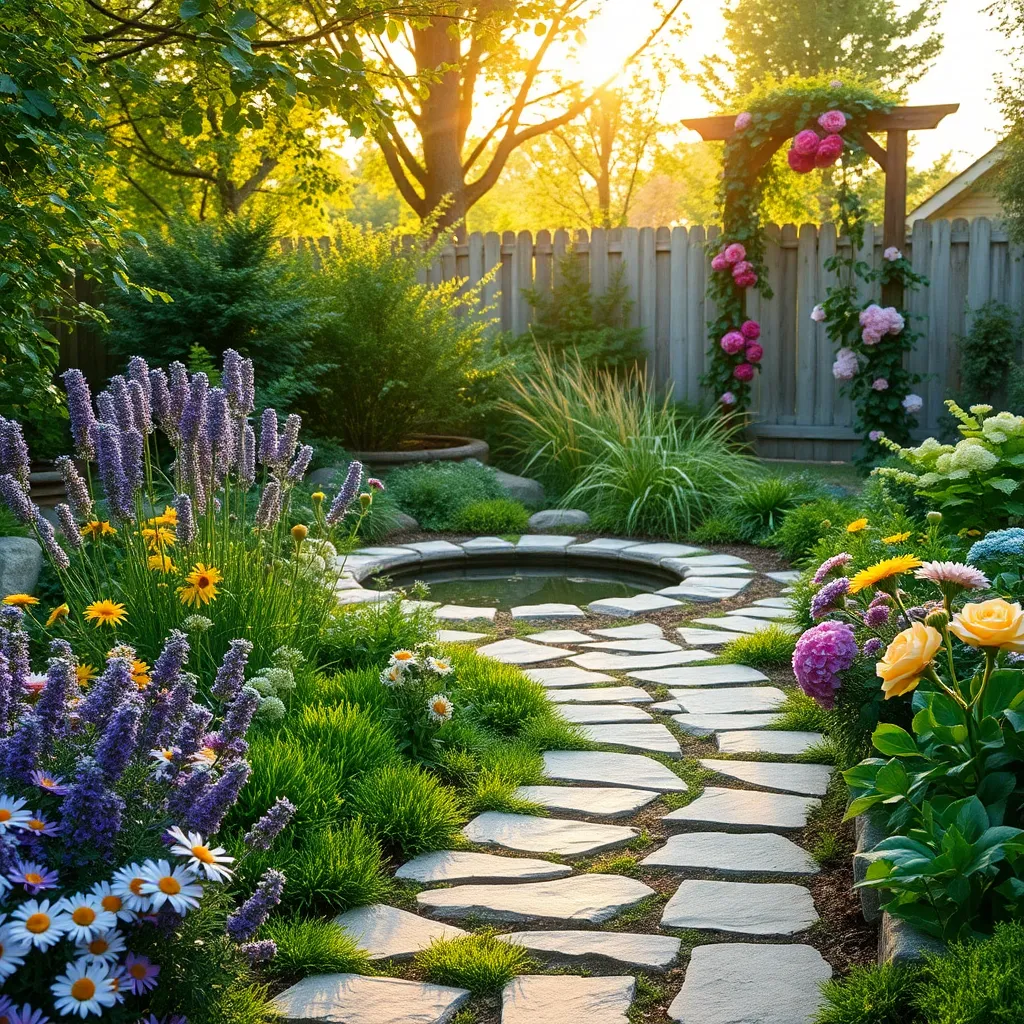
To design a harmonious layout, start by considering the natural flow of your garden space. Observe how sunlight moves through your yard, and plan your garden zones accordingly, placing sun-loving plants where they can thrive.
A mix of heights and textures can create visual interest and harmony. Use taller plants like ornamental grasses or sunflowers at the back, and layer down to shorter plants like marigolds or alyssum in the front.
Group plants with similar water and soil needs together to simplify maintenance and ensure all plants thrive. Use mulch to maintain soil moisture and reduce weeds, which helps create a cohesive look.
Think about the seasonal changes in your garden and how plants will look throughout the year. Choose a variety of evergreens and perennials to maintain structure and ensure your garden stays attractive even in the off-season.
Incorporate Eye-Catching Focal Points
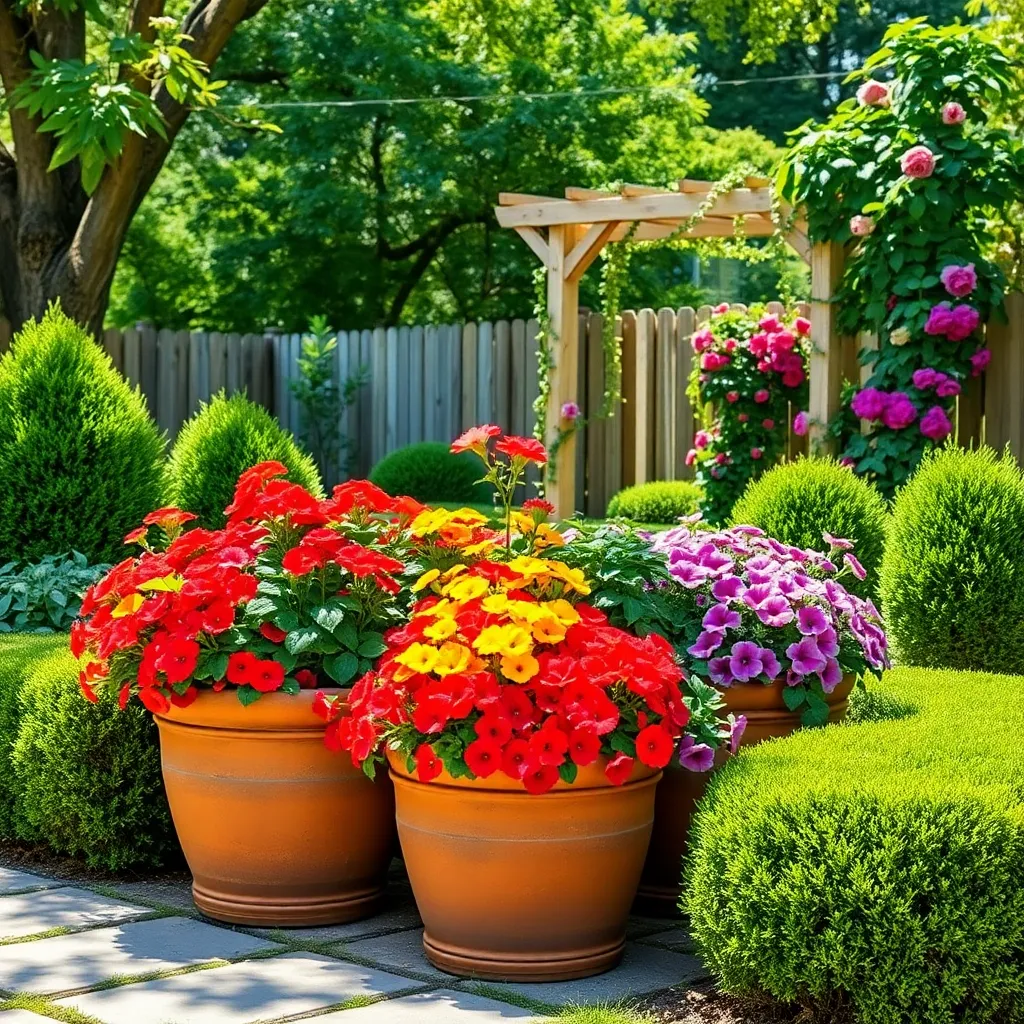
Adding eye-catching focal points to your garden can dramatically enhance its visual appeal. Start by selecting a striking element, such as a unique plant or a garden sculpture, that naturally draws attention.
Consider using plants with bold colors or interesting shapes as focal points. For instance, the vibrant blooms of a Japanese maple or the architectural leaves of a Banana plant can serve as stunning centerpieces.
When choosing a focal point, think about the scale and proportion relative to your garden space. A large statue might be perfect for a spacious backyard, while a smaller, intricately designed pot could work well in a more compact area.
Advanced gardeners might experiment with creating focal points using seasonal plants to maintain interest throughout the year. Consider planting a mix of early-blooming bulbs and late-season perennials to ensure continuous color and texture.
To ensure your focal point thrives, pay attention to its specific care requirements. For example, a Japanese maple prefers well-drained, slightly acidic soil and partial shade, while a Banana plant needs rich, moist soil and full sun.
Add Decorative Garden Pathways
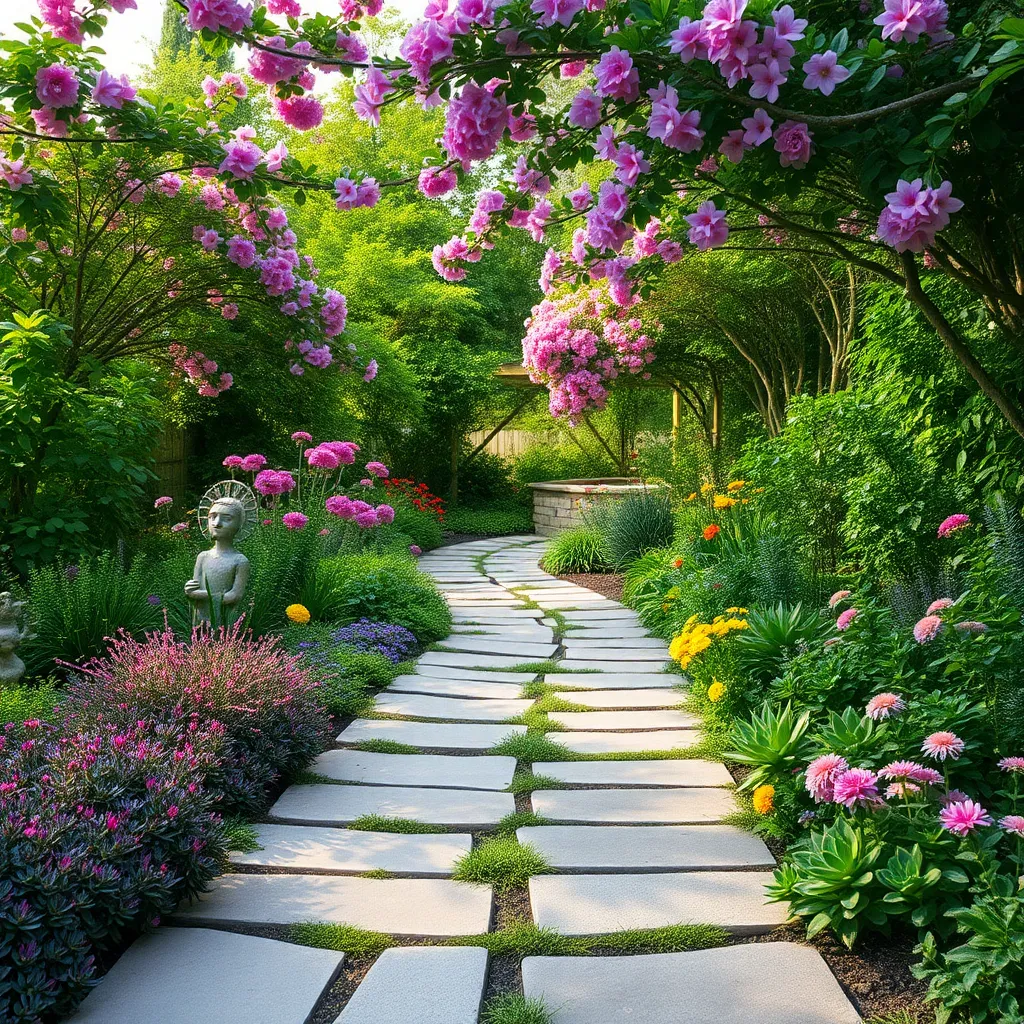
Transforming your backyard into an enchanting haven begins with adding decorative garden pathways. These paths not only enhance the visual appeal but also provide a practical way to navigate through your garden spaces.
To start, consider using natural stone, gravel, or brick for a rustic and timeless look. Each material has its own benefits: while gravel is affordable and easy to install, natural stone offers a more enduring and elegant appearance.
When laying your pathway, ensure the ground is even and firm to support the material chosen. You can achieve this by compacting the soil and adding a layer of sand or crushed stone to improve drainage and stability.
Incorporate curves and gentle turns in your pathways to create a sense of discovery and intrigue. For a more sophisticated design, try integrating small plants along the edges, such as creeping thyme or low-growing sedum, which thrive in sunny conditions and require minimal watering.
Regular maintenance, like sweeping away debris and occasional re-leveling, will keep your pathways looking pristine. By paying attention to these details, your garden paths will remain a charming feature that invites exploration and enjoyment.
Install Soft Ambient Lighting
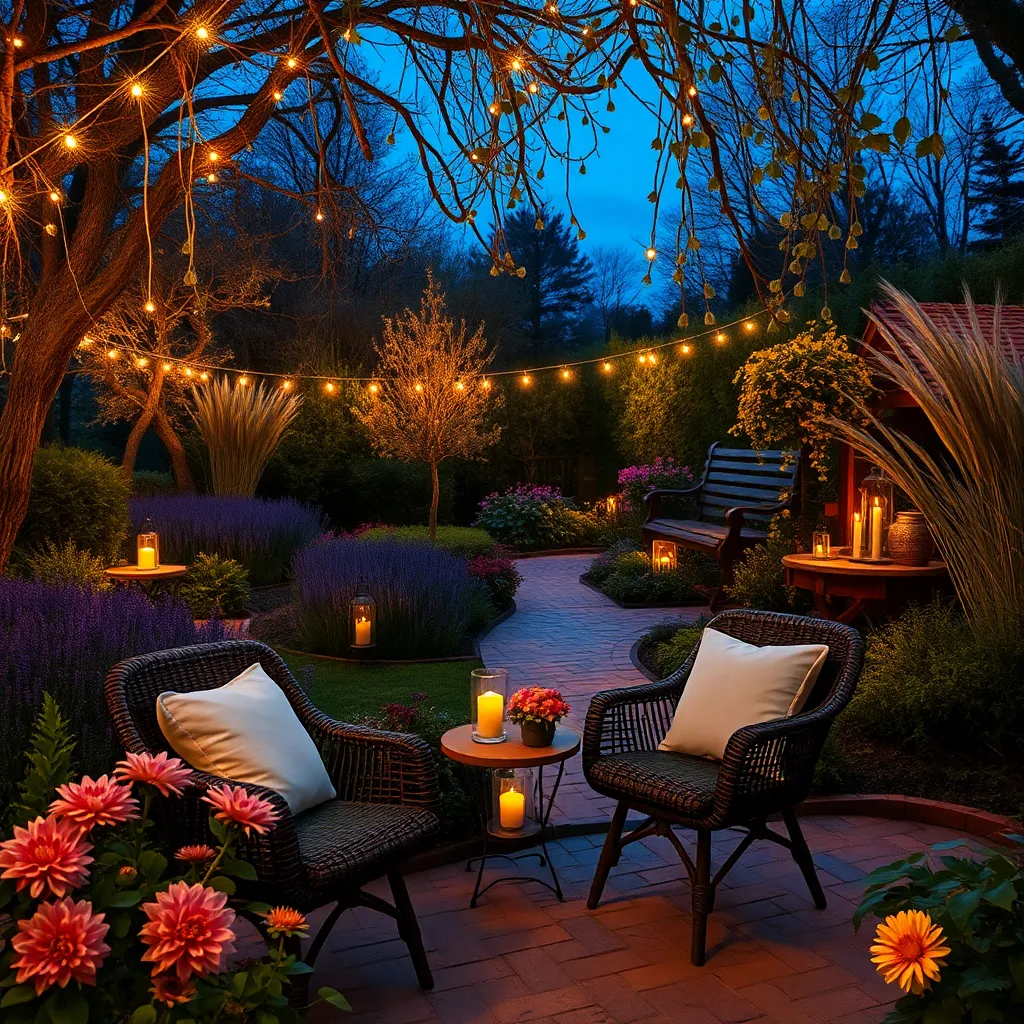
Transforming your backyard into an enchanting oasis is easy with the addition of soft ambient lighting. Begin by selecting solar-powered lights, which are environmentally friendly and require minimal maintenance, making them perfect for garden pathways or surrounding flower beds.
Consider placing small lanterns or fairy lights along your garden paths to create a warm and inviting atmosphere. These lights not only enhance the beauty of your garden but also provide practical illumination for evening strolls or late-night gatherings.
For a more sophisticated touch, install LED spotlights to highlight specific plants or landscape features. Opt for lights with adjustable brightness settings to tailor the ambiance according to your needs, whether you’re hosting a party or enjoying a quiet night outdoors.
Advanced gardeners might experiment with color-changing lights to create a dynamic display that changes with the seasons. Choose lights with timers or smart controls for convenience, allowing you to automate your lighting scheme and ensure your garden always looks its best, even when you’re not around.
Conclusion: Growing Success with These Plants
In transforming your backyard garden into a beautiful haven, five key relationship concepts stand out: communication, shared vision, commitment, adaptability, and appreciation. Emphasizing open communication helps you align your gardening goals, while nurturing a shared vision ensures you and your partner work towards a harmonious space. Commitment is vital, as it encourages you both to invest time and effort consistently. Adaptability allows your garden—and your relationship—to flourish amidst life’s changes, and appreciation for each other’s contributions fosters a deeper connection.
As an actionable next step, set aside a weekend to plan your garden together, discussing each other’s ideas and preferences. This shared activity can strengthen your bond and lay the groundwork for ongoing collaboration.
Remember to save or bookmark this article for easy access to these valuable insights whenever you need a reminder. As you cultivate your garden and your relationship, envision a future where both thrive in beauty and harmony. With dedication and love, your relationship can blossom just like your garden, creating a sanctuary of growth and joy. Embrace this journey together, and watch as your mutual efforts yield a thriving partnership.
